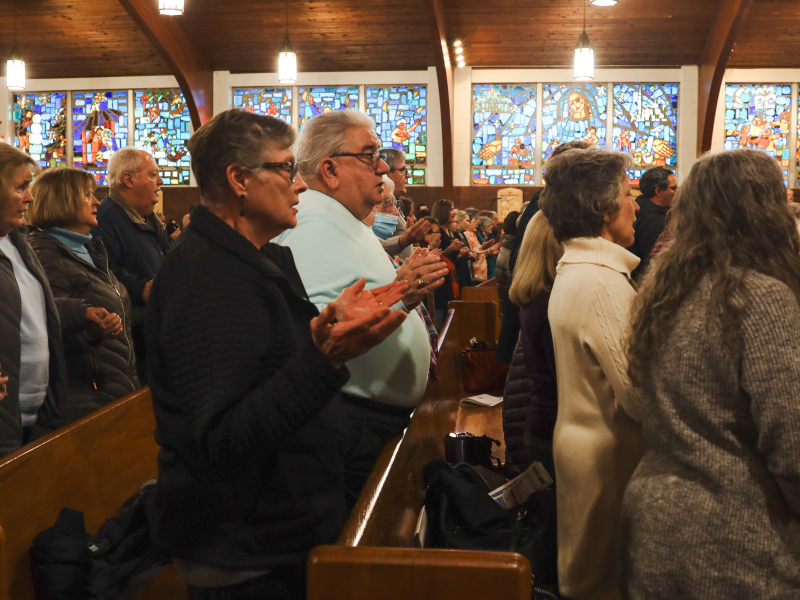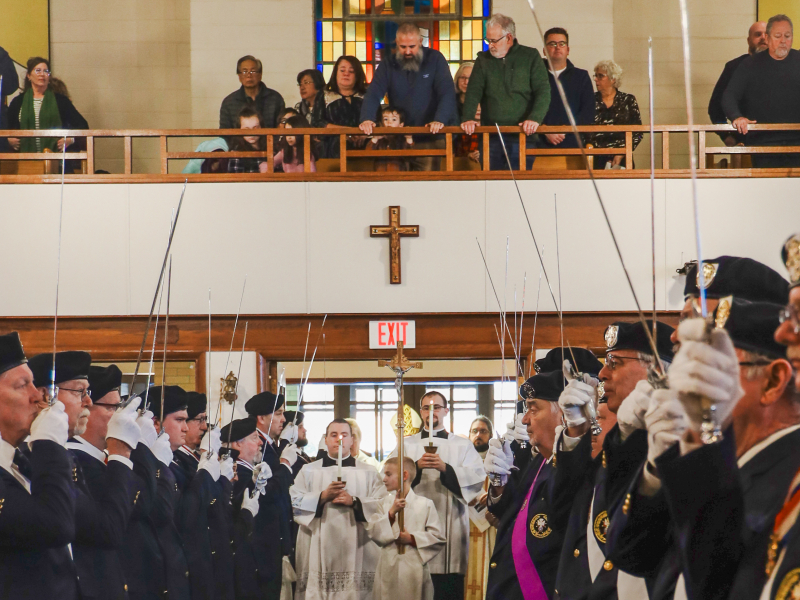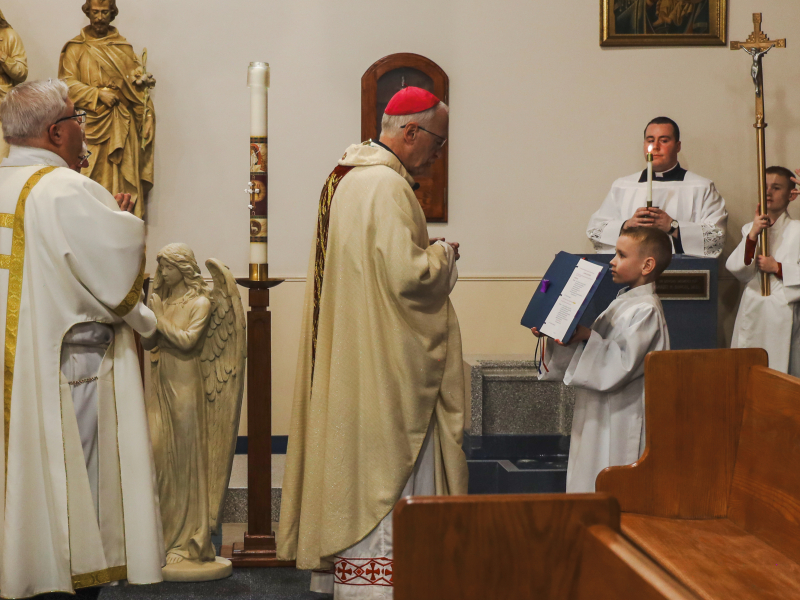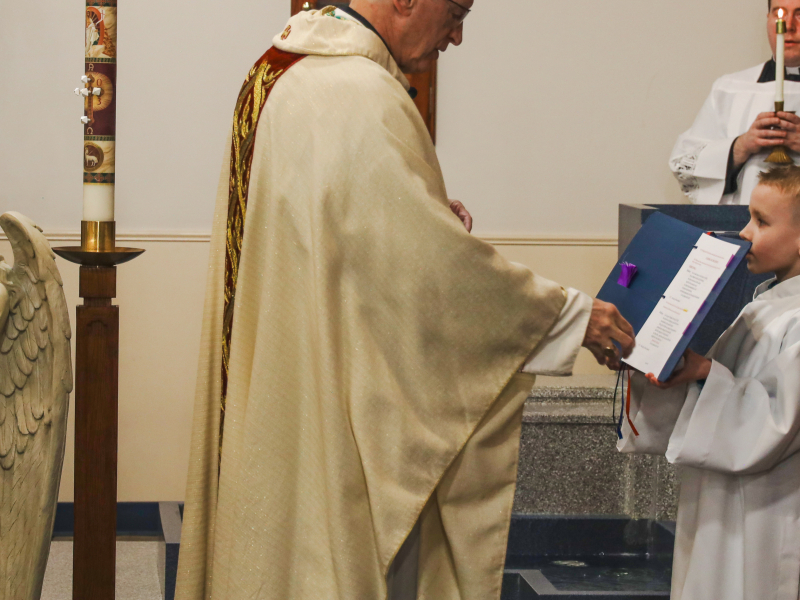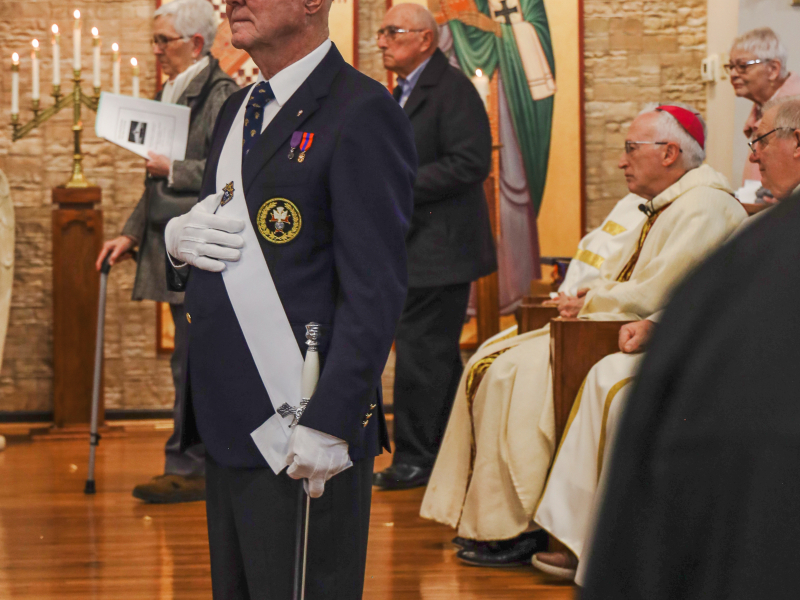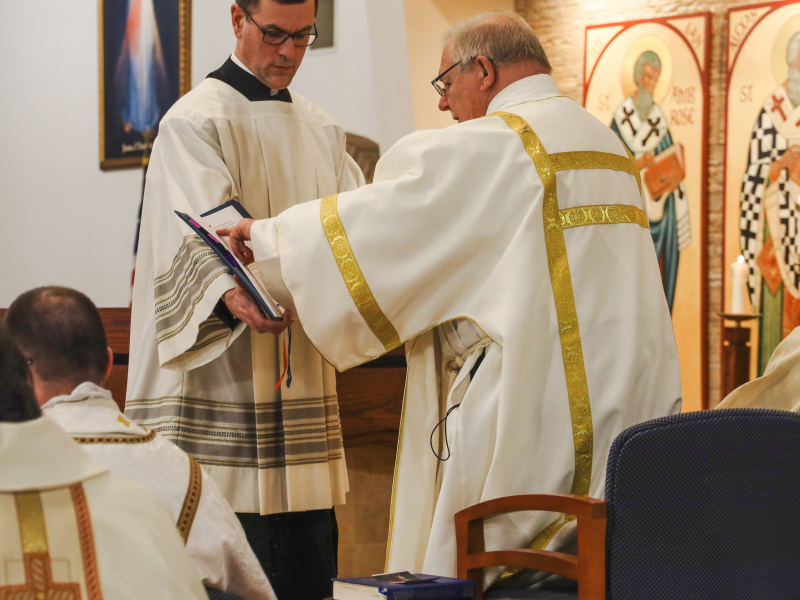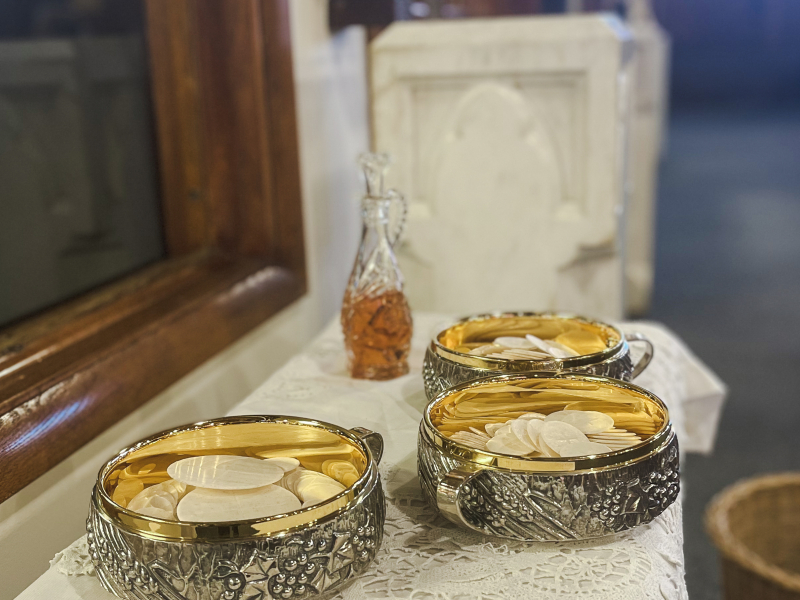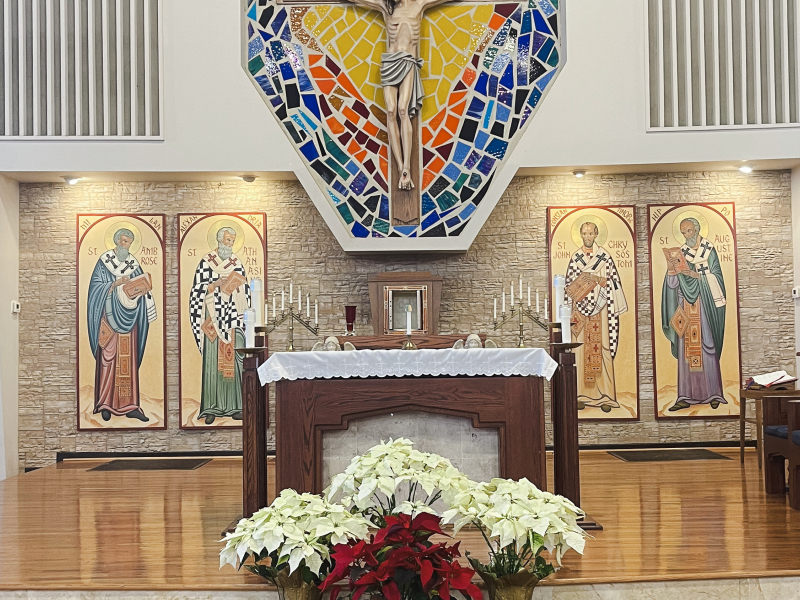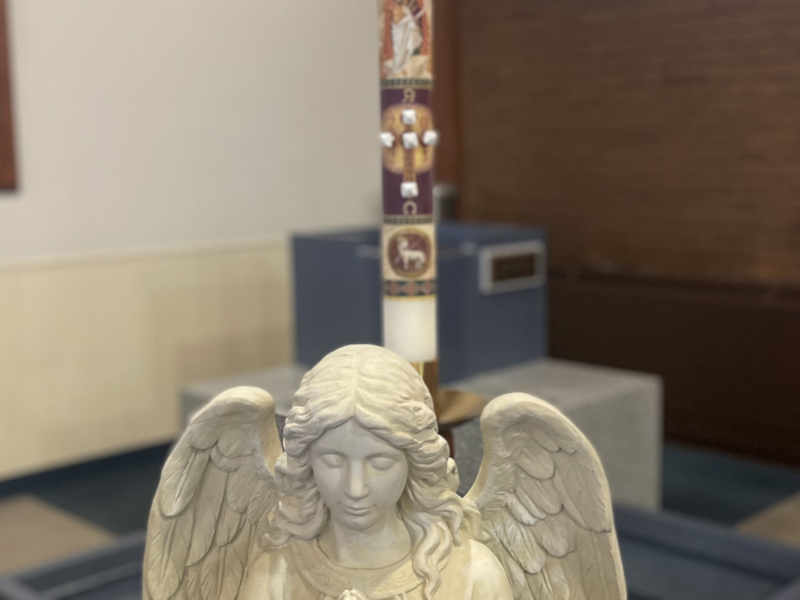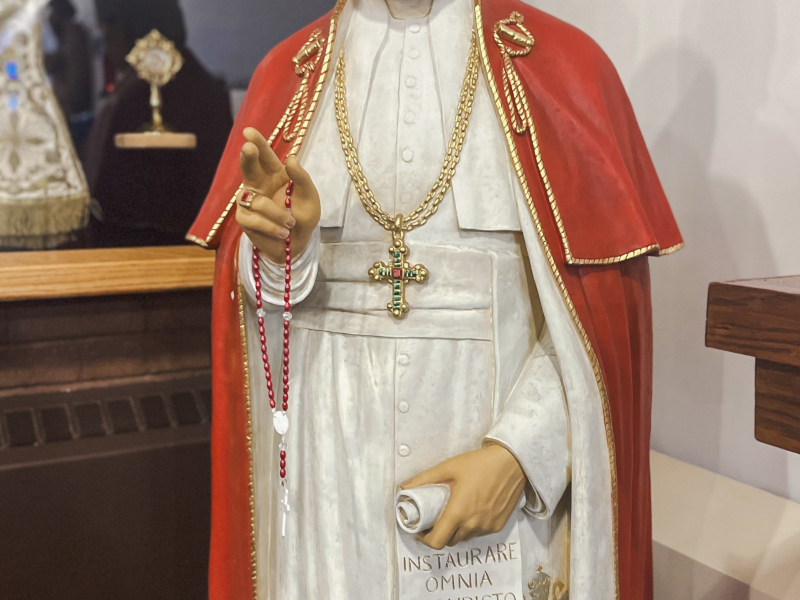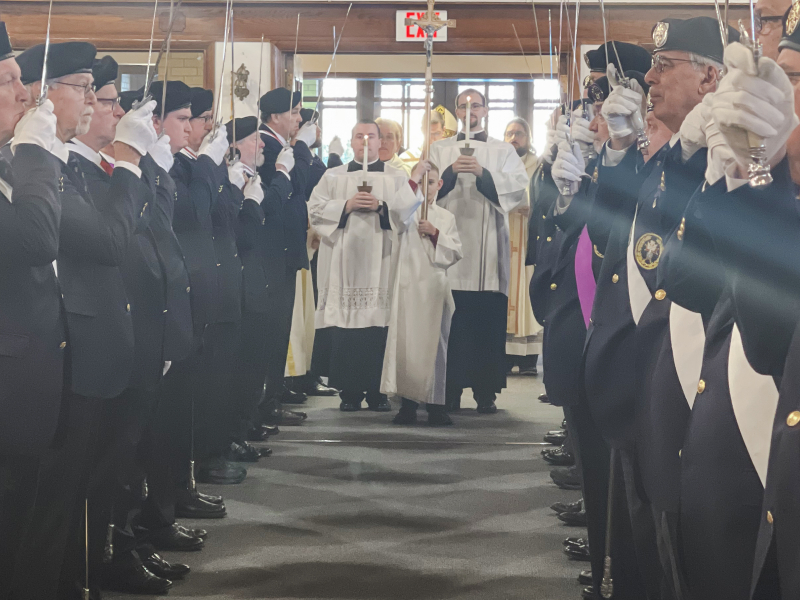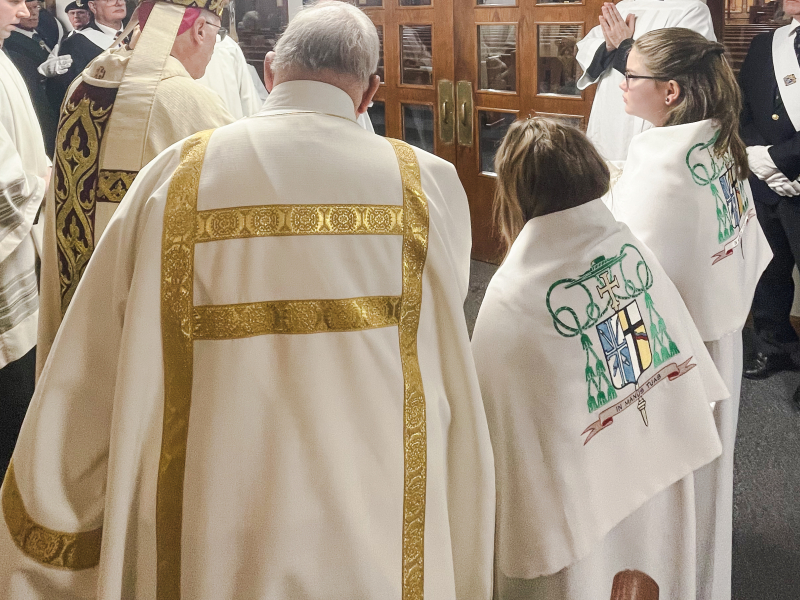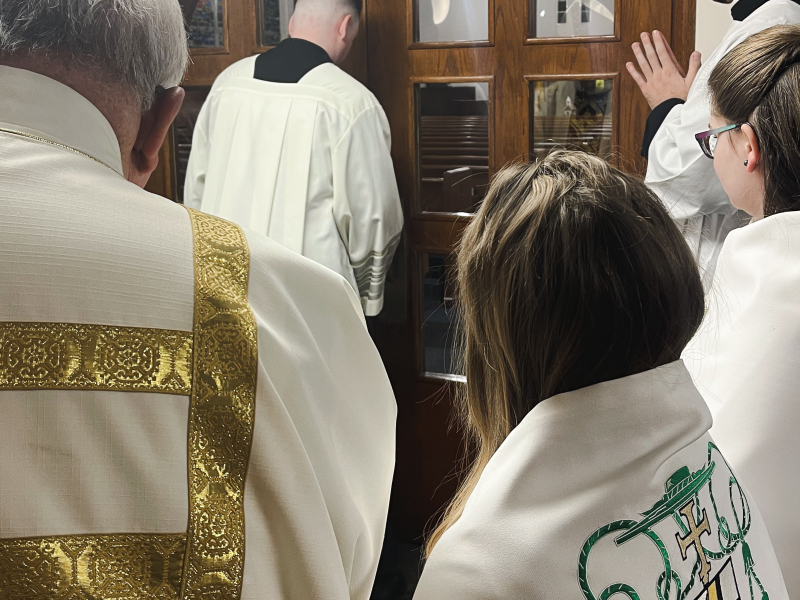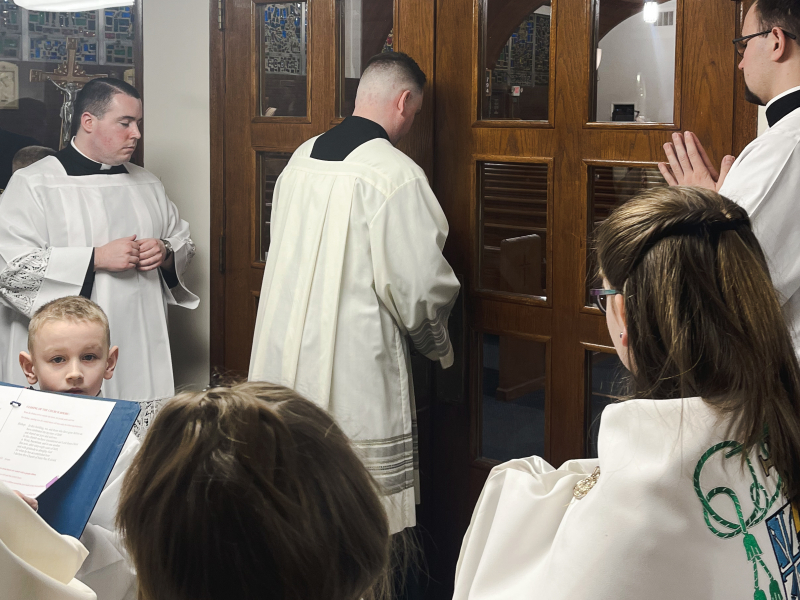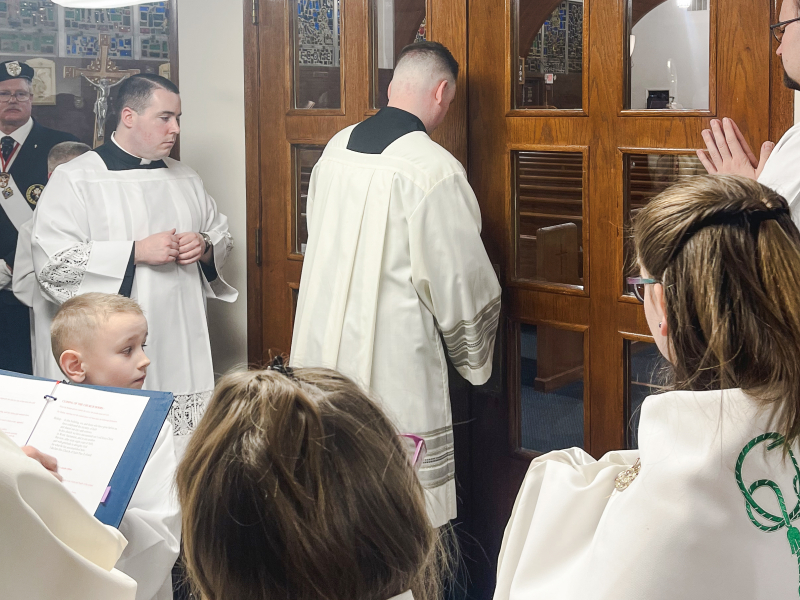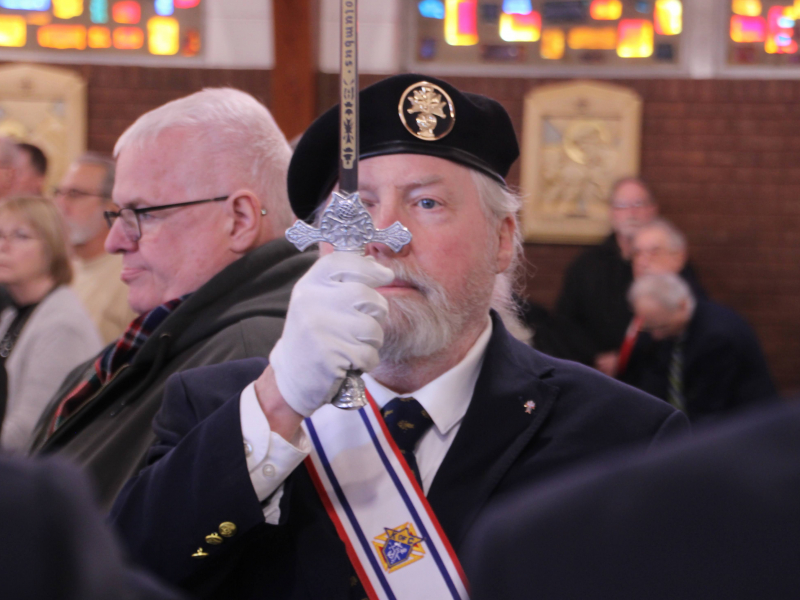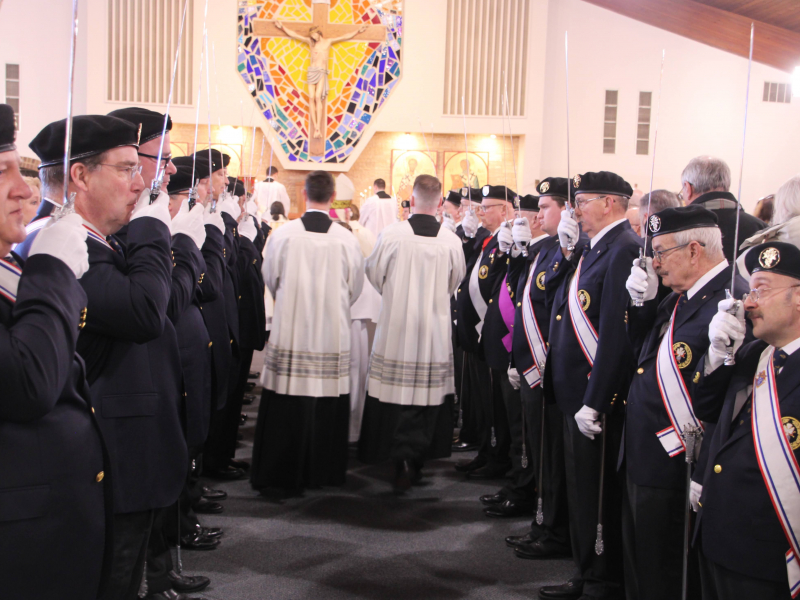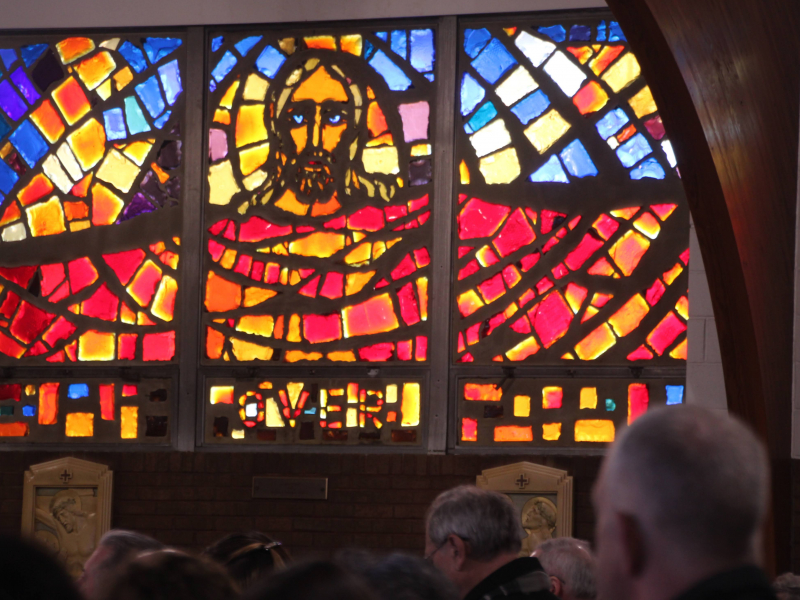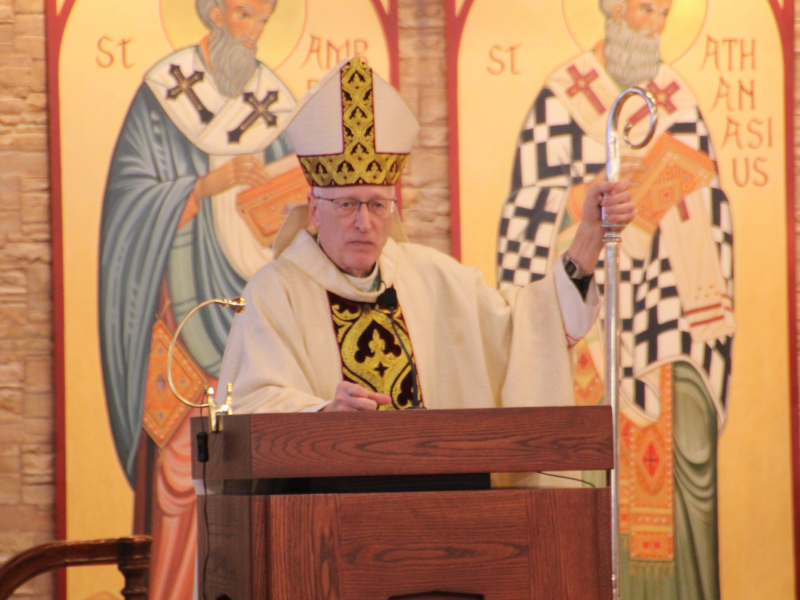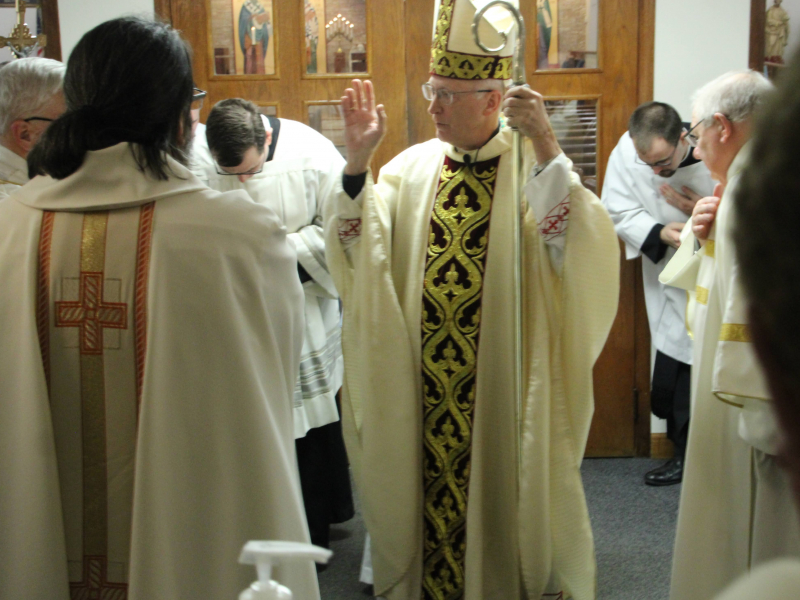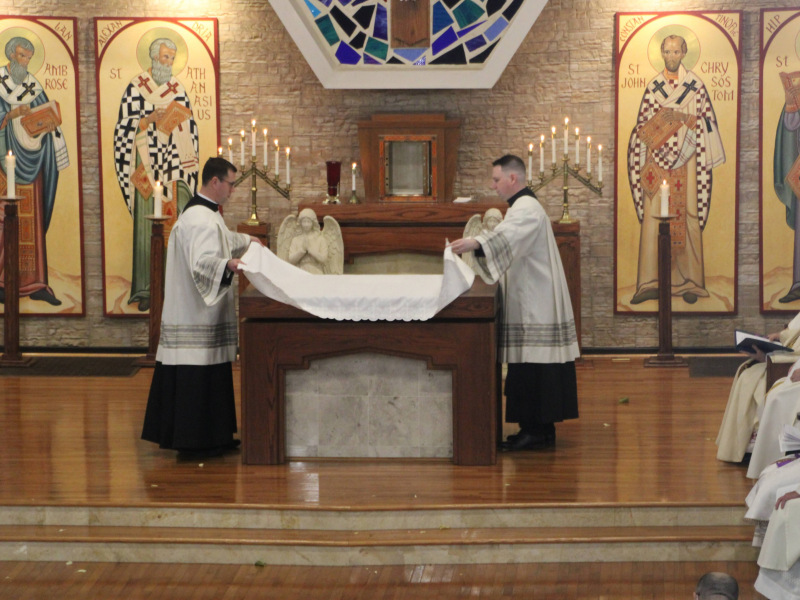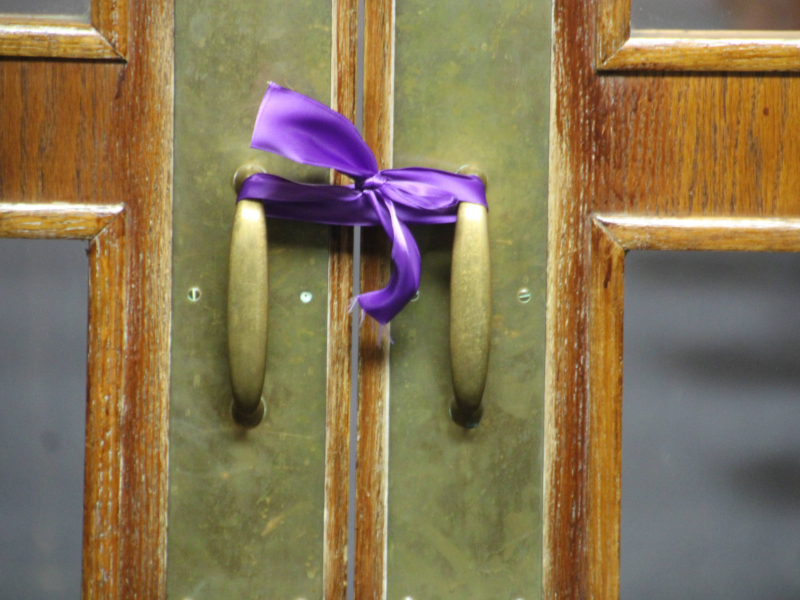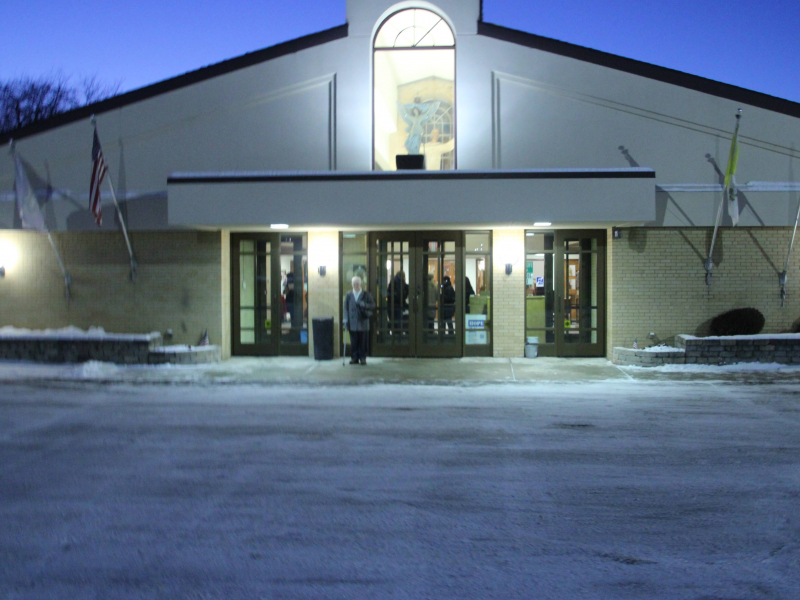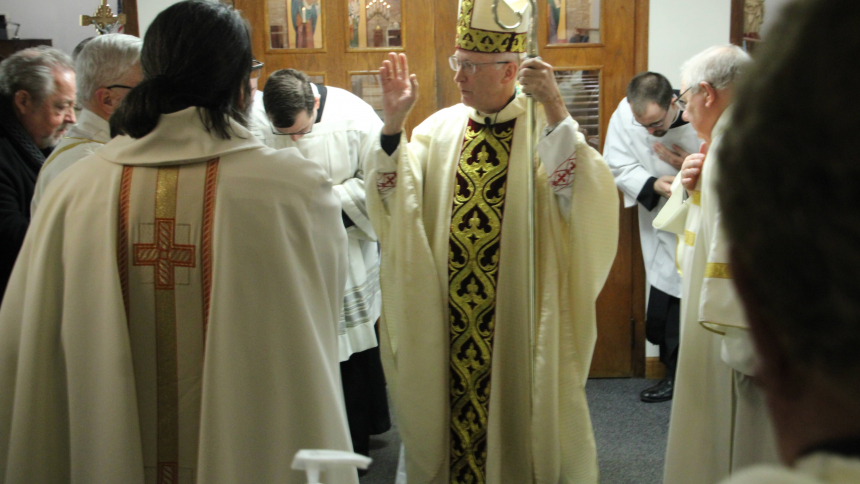
Saint Pius X in Flint closed its doors for the last time on Saturday, January 20, after 69 years of faithful service to Jesus Christ and his Holy Church. The parish was founded in 1955 by Bishop Joseph Albers with Father John A. Blasko as pastor with a parish school added seven years later. The school closed in 2020.
The principal celebrant of the final Mass on Saturday was Bishop Earl Boyea. Concelebrating were Father David Harvey, Father Anthony Smela, and parish pastor, Father Anthony Strouse.
At the conclusion of Holy Mass, the sacred altar was reverenced by both the clergy and lay faithful. The parish of Saint Pius X will then be incorporated into the nearby parish of Saint Matthew where Father Strouse is also pastor. Here is his prayerful reflection upon the closure of Saint Pius X. Father Strouse writes:
“In the Letter to the Hebrews, we read: ‘For here we have no lasting city, but we seek the one that is to come (13:14).’ The goal of every Catholic’s life is to make it to heaven, the New Jerusalem, the city that is to come. But while we have no lasting city, we find important places along our pilgrim route that strengthen us in our sojourn.”
“A parish is more than a building. It is the place where we are joined to the family of God through Holy Baptism; the place where we learn the courage and humility to acknowledge our sins and receive the mercy of God in the Sacrament of Penance; the place where God feeds us with Himself in the Most Holy Sacrament of the Eucharist; the place where the Holy Spirit invigorates us to spread the Gospel in the Sacrament of Confirmation; where a man and woman enter into a covenant with God as an icon of the very love of the Trinity; the last place our body stops before it goes to its final resting place in the Funeral Mass; and so many spiritual moments in-between those.”
“Which is what makes the closure of a parish so emotional on so many levels. In addition to the encounters with the living God, there are also the friendships that we build and the human comfort of the sights, smells, and sounds that become a part of us. While a parish church is a building, it’s unlike any other building. Churches are not only built of brick and mortar, but are also built of the heart, and communicate not only God’s presence, but also our place in the Mystical Body of Christ.”
“But, as St. Stephen reminds us in his address to the Sanhedrin in the Acts of the Apostles, ‘the Most High does not dwell in houses made by human hands (7:48).’ Our faith is not limited to only one place. And that is one of the beauties of our Catholic faith: while we tend to think of our parish as our home, each Catholic church is also our home. It may not contain all the memories that are rightfully so dear to us, or have the familiar sights, sounds, and smells, and the other parishioners may not seem like family; but each parish church, whether ours for generations, a place we visit during a vacation, or even a new parish church at which we are seeking to make a new spiritual home, because it is Catholic, it is our home, be it St. Peter’s basilica or a small chapel in a missionary land.”
“A parishioner from my first assignment who was a World War II vet once told me that one of his greatest comforts in the midst of serving in war-torn countries during those dark years was that he could go to a Catholic church and it felt, in its own way, like a piece of home. As we bid a sad farewell to St. Pius X parish, we mourn because of the love that we had for our spiritual home. But we do so also with the determination to continue on our pilgrimage of faith in the Catholic Church because “we have here no lasting city, but seek the one that is to come,” the heavenly homeland from which we will never part.”
* Photographs by Michelle Hildebrandt and Mark Corcoran

